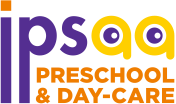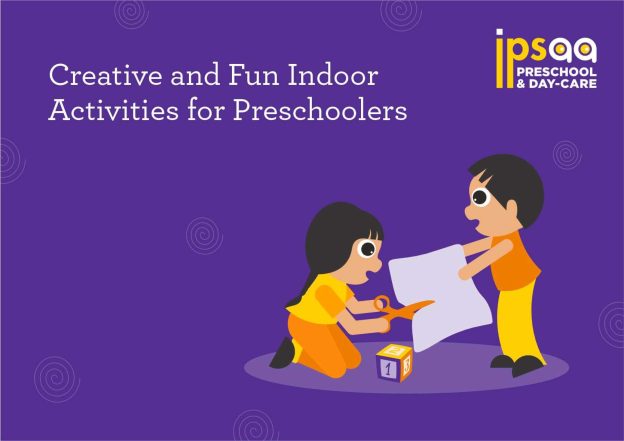Children are known for their endless energy and curiosity, and it can sometimes be a challenge to keep them entertained indoors. However, there are many fun and creative indoor activities that children can enjoy in preschool, whether they are learning or just having fun.
Best indoor activities for children in preschools
Sensory Play
Sensory play is a great way for children to explore their senses and learn about the world around them. It involves creating different textures and materials for children to play with, such as sand, water, or play dough. Sensory play can help children develop their fine motor skills, hand-eye coordination, and problem-solving abilities. One popular sensory activity is making slime, which can be customised with different colours and textures.
Arts and Crafts
Arts and crafts are classic activities for children, and there are endless possibilities for projects to do in the classroom. Children can create anything from finger paintings to paper mache sculptures. Not only does this allow children to express their creativity, but it also helps them develop their fine motor skills, hand-eye coordination, and cognitive abilities. Some fun art projects for children include creating collages, painting with different tools, and using recyclable materials to create new objects.
Storytime
Reading to children is an important part of their development, as it helps them develop their language skills, imagination, and understanding of the world. Storytime can be made more engaging by using props, such as puppets or flannel boards, to bring the stories to life. Teachers can also encourage children to act out the stories or ask them questions about the plot and characters.
Music and Dance
children love to move and dance, and incorporating music and movement into the classroom can be a fun way to get children active and engaged. Teachers can play different types of music and encourage children to dance and move along with the beat. They can also introduce musical instruments and teach children basic rhythms and melodies.
Building and Construction
Building and construction activities are not only fun, but they also help children develop their spatial awareness, problem-solving skills, and fine motor skills. Teachers can provide building blocks, legos, or other materials for children to create structures and designs. They can also encourage children to work together to build larger structures, such as forts or towers.
Science Experiments
Science experiments can be a fun way for children to learn about the natural world and develop their curiosity and critical thinking skills. Teachers can set up simple experiments, such as mixing baking soda and vinegar to create a chemical reaction or growing plants from seeds. These experiments can be used to teach children about cause and effect, observation, and experimentation.
Imaginative Play
children have active imaginations, and imaginative play is a great way to encourage their creativity and social skills. Teachers can set up different play areas, such as a kitchen or a doctor’s office, and provide props and costumes for children to use. This allows children to act out different scenarios and develop their communication and problem-solving skills.
Yoga and Mindfulness
Yoga and mindfulness activities can help children develop their self-awareness, emotional regulation, and physical coordination. Teachers can lead simple yoga poses and breathing exercises to help children calm down and focus their energy. They can also introduce mindfulness activities, such as guided meditation or mindful colouring, to help children develop their attention and concentration skills.
Cooking and Baking
Cooking and baking activities can be a fun way for children to learn about food and nutrition while developing their math and science skills. Teachers can provide simple recipes for children to follow and allow them to measure and mix ingredients. This activity can also help children develop their fine motor skills and teamwork abilities.
Puppet Shows
Puppet shows are a fun and engaging way for children to learn about storytelling and drama. Teachers can create their own puppets or use pre-made ones to act out different stories or scenarios. This activity can help children develop their language and communication skills and enhance their imagination.
Obstacle Courses
Obstacle courses can be a fun way for children to develop their gross motor skills, coordination, and balance. Teachers can create different stations, such as crawling under a table or jumping over pillows, for children to complete. They can also encourage children to work together to complete the course and offer rewards for finishing.
Board Games
Board games can be a fun and educational activity for children, helping them develop their critical thinking, problem-solving, and social skills. Teachers can introduce simple board games, such as Candyland or Chutes and Ladders, and encourage children to take turns and follow the rules. This activity can also help children develop their patience and turn-taking abilities.
Gardening
Gardening activities can be a fun and educational way for children to learn about plants and nature while developing their fine motor skills and responsibility. Teachers can provide small plants or seeds for children to plant and care for, allowing them to learn about the growth process and different parts of a plant. This activity can also help children develop patience and attention to detail.
Computer Games
Computer games can be a fun and engaging way for children to learn about technology and develop their cognitive and motor skills. Teachers can introduce simple computer games, such as puzzle games or matching games, and monitor the children’s use of technology. This activity can also help children develop their problem-solving and decision-making abilities.
Language Learning
Language learning activities can help children develop their vocabulary, listening, and speaking skills. Teachers can introduce different languages, such as Spanish or Mandarin, and use songs, books, and games to teach basic phrases and vocabulary. This activity can also help children develop their cultural awareness and appreciation.
In conclusion, there are many creative and fun indoor activities for children in preschools. These activities not only provide entertainment but also help children develop important skills and knowledge. By incorporating a variety of activities into the classroom, teachers can create a dynamic and engaging learning environment for their students. Ipsaa Promotes the development of children in many indoor and outdoor activities to enhance their physical and mental skills.


